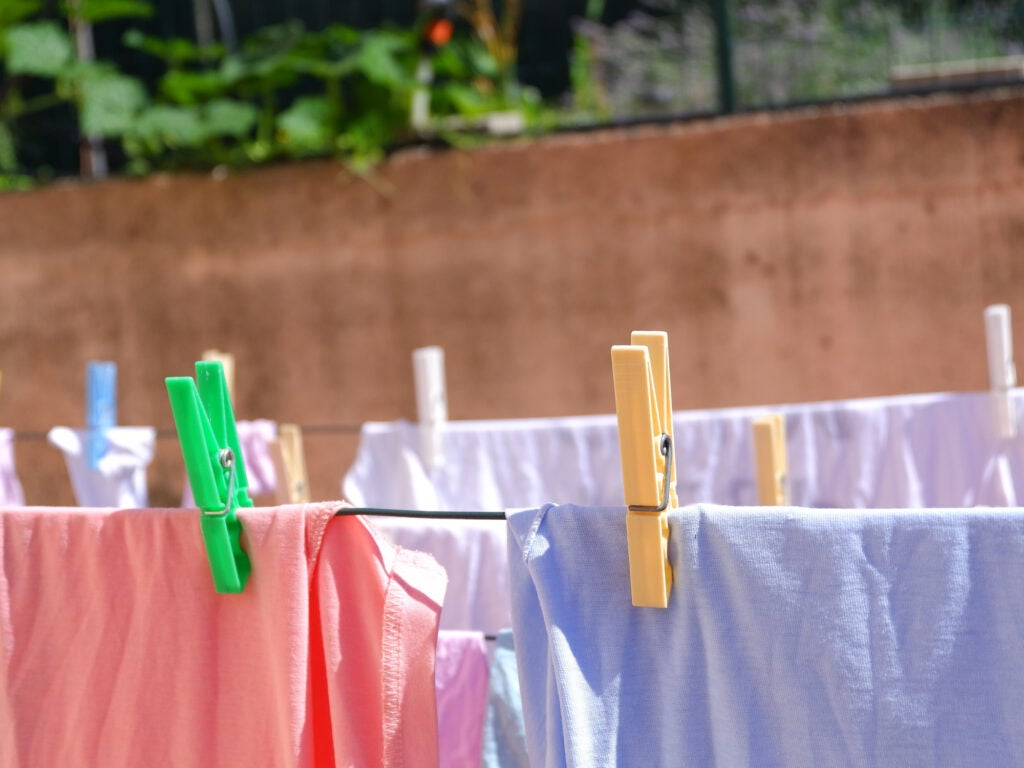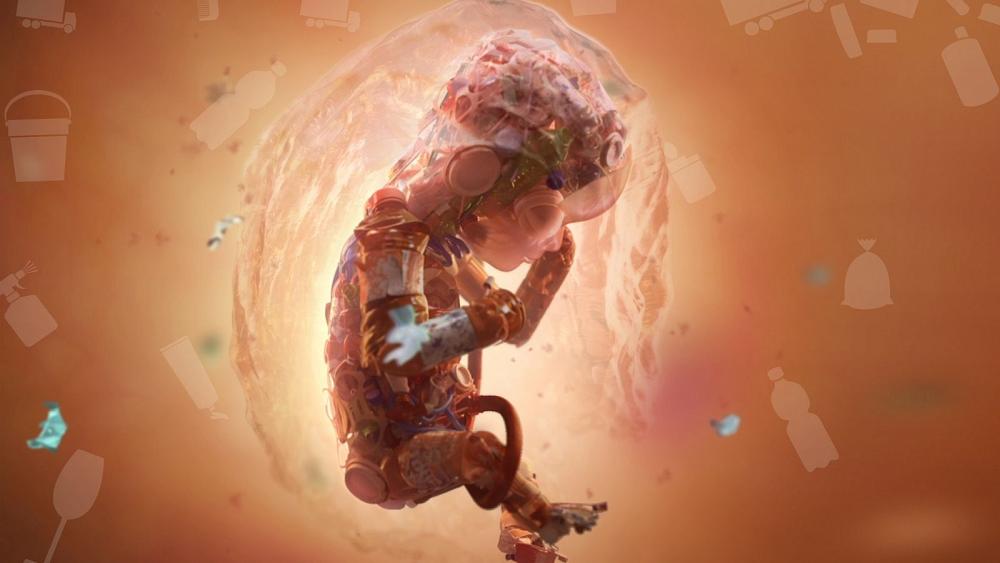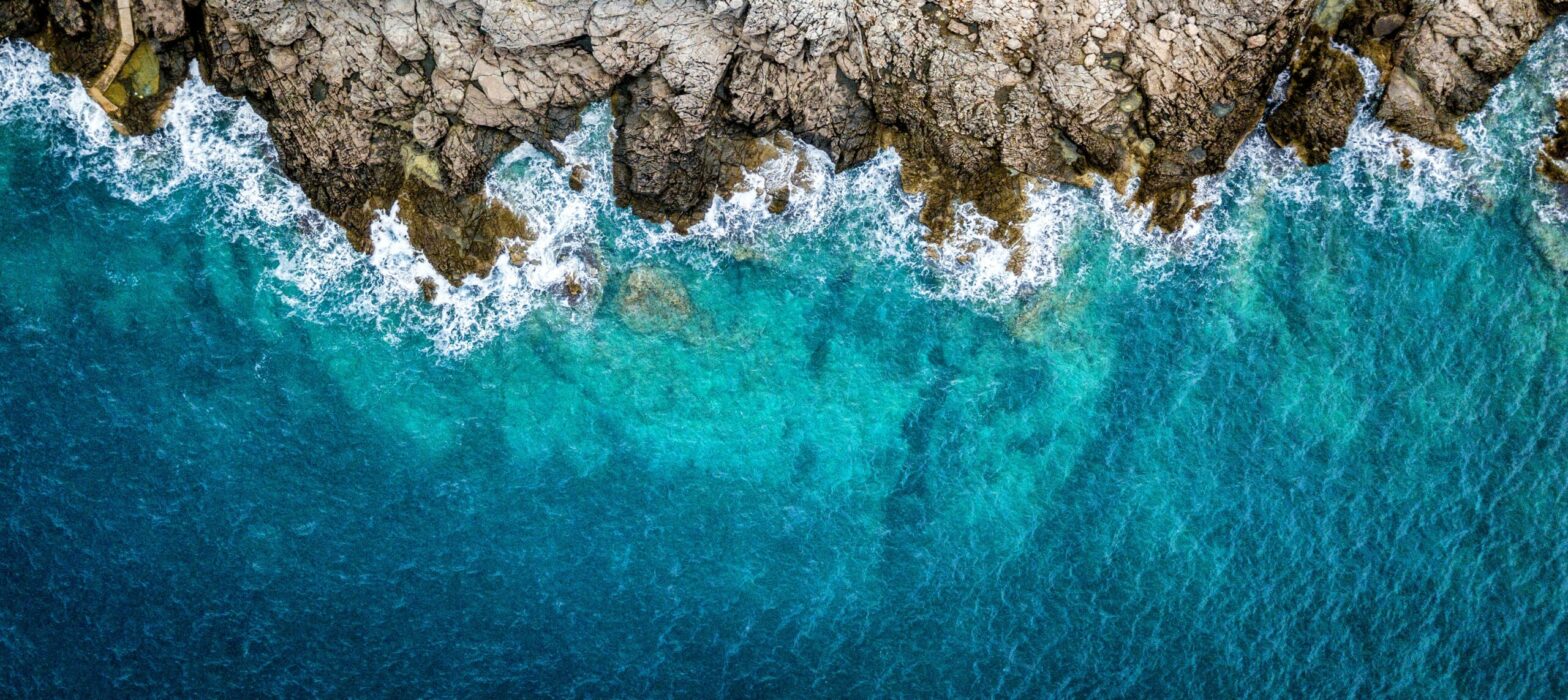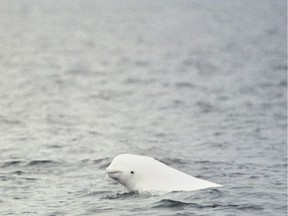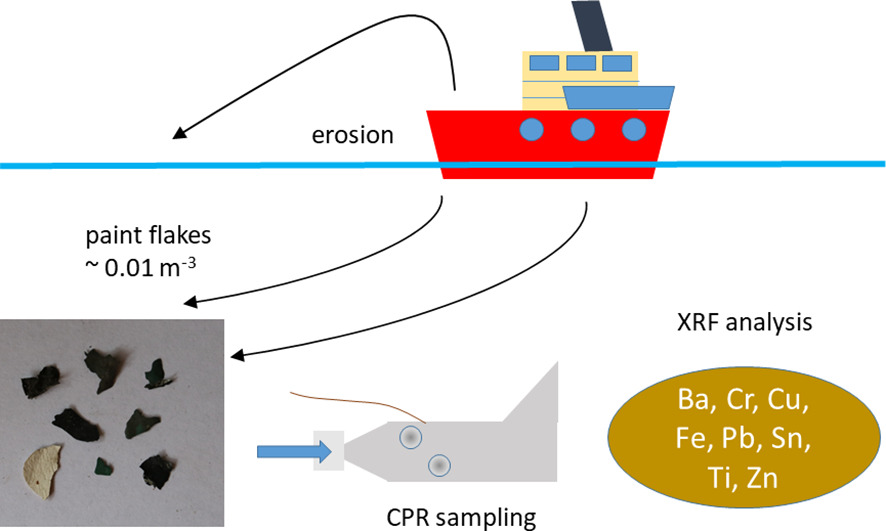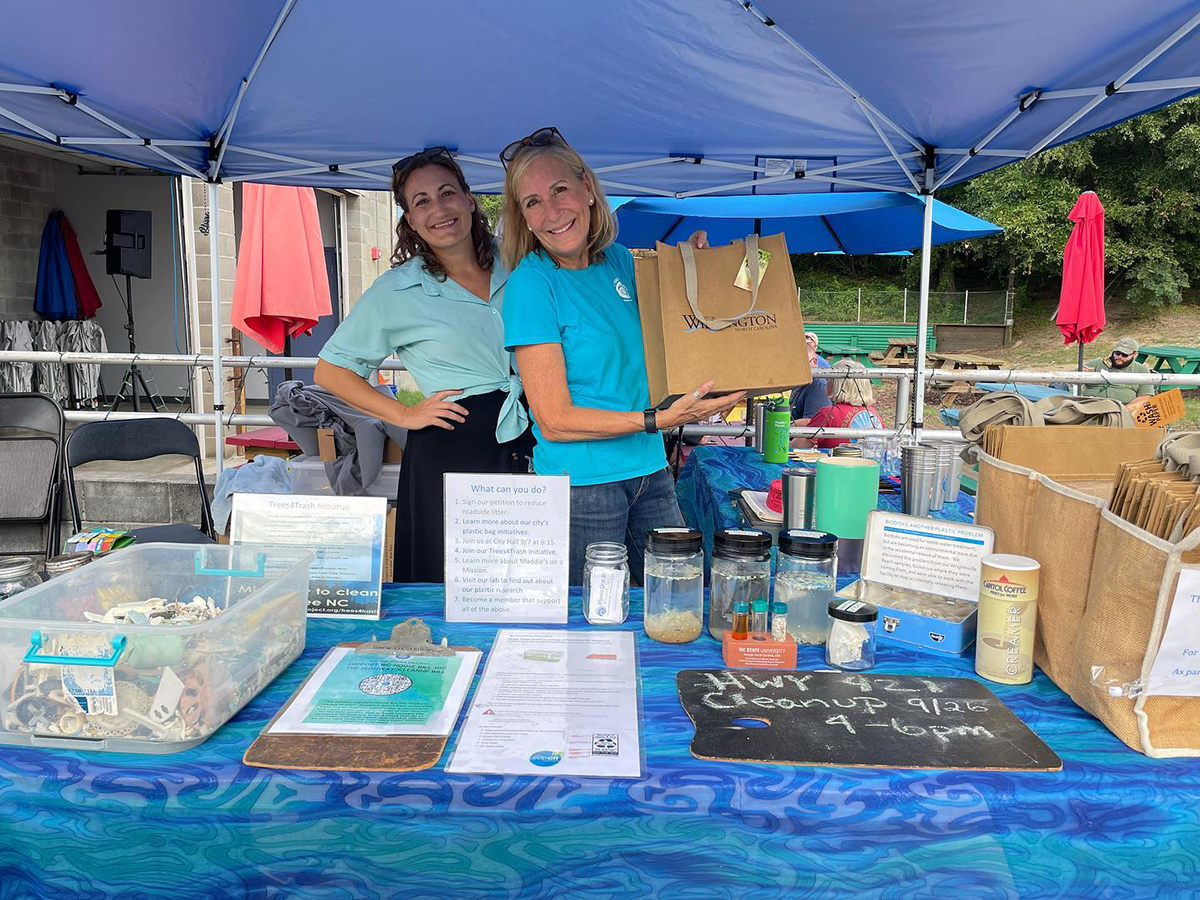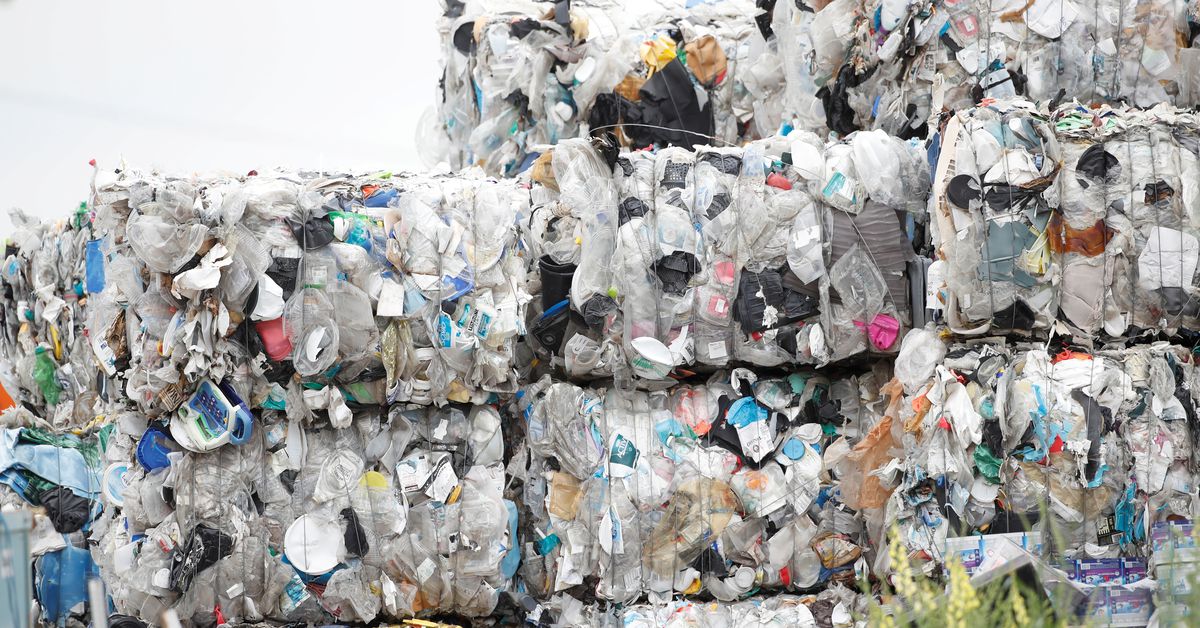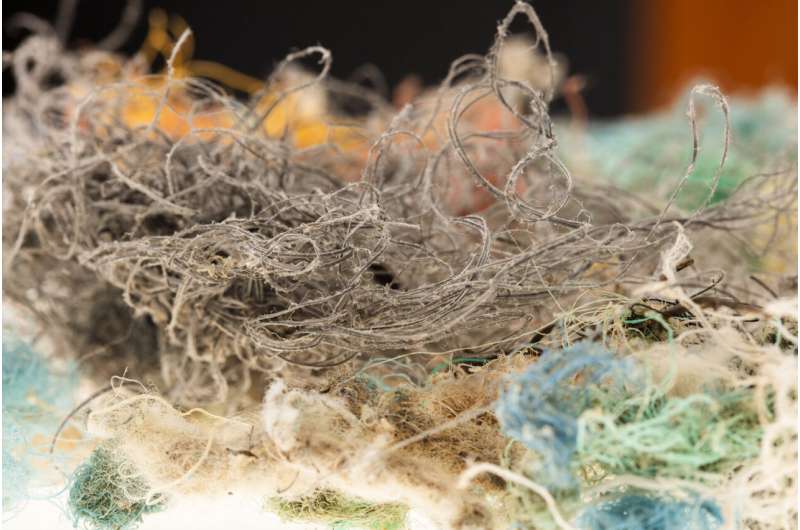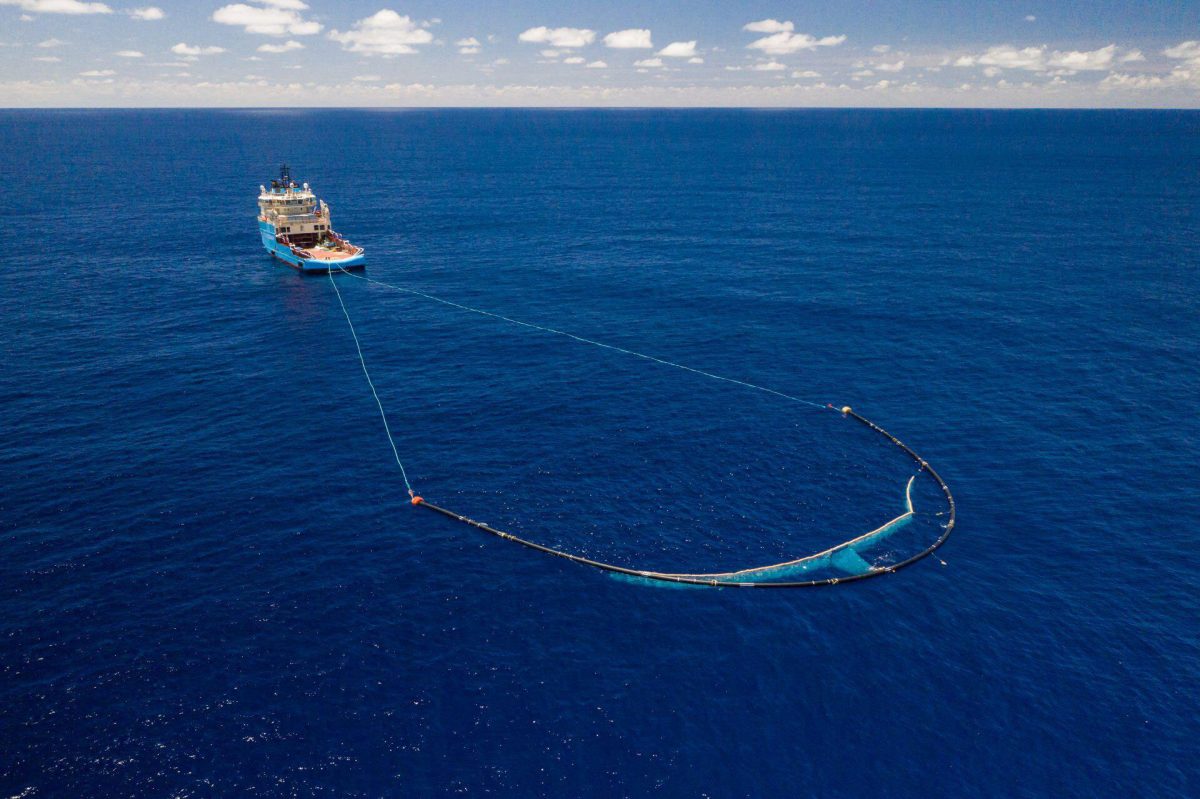Article body copy
A garbage truck turns off the road, engine rumbling, brakes wheezing, and the smell of rot trailing in its wake. The truck stops short and starts to reverse—beep, beep, beeping down a boat launch. With salt water lapping at its rear tires it stops, opens its tailgate, and dumps its load of cups, straws, bottles, shopping bags, fishing buoys, and nets.
A minute later, this plastic waste is floating away on a journey to pollute the ocean and poison the food chain. As the garbage truck drives away it passes another truck preparing to back down the ramp. And another pulling into the marina—one of an endless stream of garbage trucks, each lining up to dump its own load of plastics.
It doesn’t happen like this, of course, but eight million tonnes of plastic does end up in the ocean every year—the equivalent of a garbage truck’s–worth every minute. And the rate is increasing. If nothing changes, the amount of plastic sloshing around the ocean could double in 10 years. By 2050, that mass of plastic could exceed the weight of all the fish in the sea.
The costs to society and the environment are huge. A study by the consultancy firm Deloitte shows that, every year, up to 1,000,000 seabirds and 100,000 marine mammals and sea turtles die after ingesting or being entangled by plastic. Microscopic bits of plastic are working their way up the food chain, including in the seafood we eat. Plastic floating around the ocean carries invasive species that compete with or prey on native species. And when it washes onto beaches, plastic pollution affects tourism and devalues real estate. In its examination for 2018, Deloitte pegged the price of ocean plastic pollution at US $6-billion to $19-billion. That’s cheap compared with another study, which calculated the cost at up to $2.5-trillion per year, or $33,000 per tonne. None of that accounts for plastic’s costs to human health. Yet along its production cycle from oil and gas refining to use and disposal, plastic produces chemical emissions that have been linked to hormone disruption and cancer.
It’s enough to motivate teenage entrepreneurs, philanthropists, corporations, nonprofit organizations, governments, university students, and afflicted communities around the world to take action. Their ideas are seemingly as diverse as the species living in the sea: a Korean program pays fishermen to collect plastic at sea. In Baltimore, Maryland, the cartoonish Mr. Trash Wheel skims up to 17 tonnes of garbage out of the city’s harbor in a day. Inspired by the plankton-filtering ways of the whale shark, Singapore-based Drone Solutions created the WasteShark, an autonomous drone that sucks up floating bits of plastic in harbors. Chinese and Australian researchers are exploring the potential to use nanotechnology to pull microplastics out of the water in wastewater treatment facilities. Other efforts range from collecting old nets at harbors, to making plastic itself a currency to incentivize its collection, to using multimillion-dollar booms to skim plastic from the ocean’s surface, to volunteers diving to the seafloor to clean it up. There’s little doubt these efforts are well intentioned. But they are not all equal.
There is a harsh reality that all of us concerned with the mounting ocean plastic problem must confront: the vast majority of the plastic in the ocean is too small or too out of reach to ever be cleaned up. It is suspended in the water column, settled on the ocean floor, or degraded into microscopic particles that are difficult to detect, let alone collect.
That realization is vital. With the plastic pollution problem growing increasingly dire, and with so many potential solutions on offer—all competing for limited funding, resources, and public support—it is more urgent than ever to focus on the approaches that are most likely to succeed.
One of the best-known and best-funded efforts, the Ocean Cleanup, is instructional in understanding not only the size of the ocean plastic problem, but also the challenge of cleaning it up.
Founded in 2013 by then-18-year-old Boyan Slat, the nonprofit has raised more than $35-million to clean up the five gyres, convergence zones in the world’s oceans where plastic tends to concentrate. Slat’s first target is the North Pacific’s infamous Great Pacific Garbage Patch.
The Ocean Cleanup has tested multiple iterations of its plastic-catching booms. Though the project has seen some success in capturing plastic waste, a fundamental flaw plagues the approach. Photo by Abaca Press/Alamy Stock Photo
Slat’s plan is to harness the currents and the wind to herd the bigger floating pieces of plastic into horseshoe-shaped booms. Just as windblown trash gets ensnared in a fence, the plastic should get trapped in the booms until a boat can come to haul the debris to shore. Sounds simple. But after its first two pilot projects failed to gather trash, the Ocean Cleanup is years behind schedule. With a successful test of its third design in 2019, the organization says it is back on track to deploy 60 of its devices in all the world’s oceans within the next decade. In 2018, it estimated it could clean up 50 percent of the plastic in the ocean by 2023. It’s an audacious claim that many doubt is possible (not just because, by 2021, the organization had yet to deploy any operational booms). Yet Slat notes he has hired more than 100 staff and experts to help develop the project’s signature booms. He also likes to say that, sometimes, tackling big problems requires an outside perspective and a venture capitalist’s attitude.
“Rather than doing many small things that you hope add up, it’s much more effective to work on projects that are high risk and high reward,” he told Digital Trends in 2019. “If one of them works, you can actually solve the whole problem, or at least a large part of it.”
Through its trials, the Ocean Cleanup has helped spread awareness of the problem of plastic pollution. The organization has improved the scientific understanding of the kinds of plastic in the ocean and where it’s coming from. But from its inception, independent scientists have been critical of the Ocean Cleanup. Some expressed concerns about the unintended harm the booms could pose to marine life, such as pelagic fishes, sea turtles, and marine mammals. A well-discussed issue has been the booms’ effects on the neuston, a little-known community of organisms that lives in the ocean gyres. The neuston includes animals, plants, and microorganisms—like the Portuguese man-of-war, sea snails, and the sail jellyfish—that drift with the wind and currents. Neuston and plastic debris, maneuvered by the same forces, occur in the same areas. Collecting the plastic means collecting neuston, with unknown consequences for the open-ocean food chain.
Sail jellyfish and other neuston, creatures that are carried around the ocean by the wind and currents, are at risk of being ensnared by the Ocean Cleanup’s booms. Photo by Flip Nicklin/Minden Pictures
But a more direct concern for the Ocean Cleanup’s goal of cleaning up the five gyres is just how difficult it is to trap plastic in the open ocean. While there is plenty of plastic floating on the surface of the North Pacific gyre, even more is out of reach, suspended in the water column and degraded into tiny pieces that slip right through the booms.
Sönke Hohn, a biologist specializing in mathematical modeling at the Leibniz Centre for Tropical Marine Research in Germany, is one of the Ocean Cleanup’s many skeptics. Last year, in collaboration with researchers in the United Kingdom and Germany, Hohn published an analysis of what it would take for the Ocean Cleanup to collect only the floating plastic in the largest five gyres. Hohn and his colleagues took the current amount of plastic in the ocean, added annual inputs, and compared it with how much plastic the Ocean Cleanup’s successful pilot collected. In the project’s 20-year estimated timeline, Hohn’s math showed that the Ocean Cleanup’s efforts would have no noticeable effect on the amount of plastic in the ocean. To clean up a fraction of one percent of the total, the Ocean Cleanup would have to run nonstop until 2150. Even when Hohn artificially increased the fleet to 200 booms, the project still only recovered five percent of the floating plastic.
“That was with an optimistic scenario,” Hohn says.
Logistics aside, Hohn also worries about the optics of the Ocean Cleanup’s efforts. If the project even appears to be working, the rest of us could feel absolved from action, he says. “The media and the public love the story of a young guy coming along to save the ocean,” Hohn says. “We like to think: he’s solved the problem. We don’t have to change anything. The truth is, we can’t rely on technology to clean up the ocean.”
Like many of his colleagues in marine plastic research, Hohn thinks the whole principle of cleaning up the ocean is misguided.
In July 2020, the Pew Charitable Trusts and Systemiq released a report called Breaking the Plastic Wave. Yonathan Shiran, the project director and author of an accompanying scientific study, compares cleaning up ocean plastic with mopping up a flooding house.
“First you have to turn off the source of the water,” says Shiran, “then you wipe up the floor. I do worry [cleanup efforts] are distracting us from the real solution—closing the tap.” No cleanup effort is cheaper and more effective than preventing plastic from entering the environment, the study found.
The cleanup quest is so futile, says John Hocevar, the ocean projects lead for Greenpeace USA, that he’d like to see every dollar earmarked for cleanup worldwide redirected to fixing the leaks. “We’re making the problem worse at a pace that far exceeds what we can possibly clean up,” he argues. “We need to close the tap as quickly as possible. Then I’ll be more excited to clean up the mess.”
But closing the tap may be an even more monumental task. In rich countries, cutting off the flow of plastic into the sea will require policy changes to encourage better waste management, a circular plastics industry, banning single-use plastics, and incentivizing reusable options. In poorer places, it requires all that and more widespread waste management.
People living in lower-income countries generally produce far less plastic waste per capita, but the Pew study found that two billion people are currently living without waste collection. With nowhere to put it, Shiran says, they’ll often dump their garbage in the street where rain and wind wash it into rivers, which eventually carry it to the ocean. Surveys of plastic at sea, combined with studies looking at ocean currents and drift patterns, show that more than 80 percent of the plastic in the ocean first bobbed down a river—a quarter of it down just 10 rivers, mostly in Asia. A growing population means that the number of people without garbage services will nearly double by 2040, compounding the problem. Expanding waste collection services to everyone would be nearly impossible, says Shiran.
Plastic debris tends to accumulate in a handful of key sites, such as in harbors and along beaches. Imaginechina Limited/Alamy Stock Photo
Knowing the leak is unfixable, at least for now, strengthens the argument for mopping up in the meantime.
“We don’t say, The oil spill is too big to clean up, so why bother,” says Susan Baer, the executive director and cofounder of Clear Blue Sea, a nonprofit working on a fleet of what are basically ocean-going Roombas. “Leaving that much plastic in the ocean is detrimental to human health and the health of the ocean. Every animal in the sea will eat whatever plastic it can fit in its mouth,” Baer says.
“Cleanup efforts are an important piece of the puzzle, right up until they’re not needed,” adds Chloé Dubois, cofounder of Ocean Legacy Foundation, a Canadian nonprofit that organizes beach cleanups and recycles marine debris among other activities. “They remove bigger pieces of plastic before they become impossible to clean up. They also help shift the narrative and public behavior. That’s what drives policy changes.”
So even if we are going to follow Hocevar’s lead and put as much time and money as we can into closing the plastic leak, that still leaves us in the same spot: figuring out which of the many competing cleanup efforts deserve our funding, support, and attention.
But the struggles of the Ocean Cleanup, and the realization that most plastic in the ocean—small, sunken, and degraded—is nearly impossible to collect, are insightful. Taken together, they lead us to a stance shared by many experts: that the best way to clean up the ocean is to stop trying to clean up the ocean.
After its own research showed plastic’s freshwater source, the Ocean Cleanup in 2015 diversified and started working on the Interceptor, a river boom system that funnels garbage into an anchored collection barge. The organization has installed three Interceptors: in the Klang River in Malaysia, in the Ozama River in the Dominican Republic, and in the Cengkareng drain in Indonesia. A fourth is in the works for the Mekong River in Vietnam. The organization is aiming to place an Interceptor in the 1,000 most polluted rivers by 2025.
The Ocean Cleanup’s Interceptor program recognizes the riverine source of most marine plastic waste and tries to catch it nearer to the source. Photo by Frans Blok/Alamy Stock Photo
But rivers are transportation corridors. To avoid conflicts with boats, the Interceptor only extends partway into the river. Plenty of trash slips by. When it does, it tends to collect in harbors. These sites, experts suggest, are ideal locations for concerted, targeted efforts—like the England-based Water Witch.
In the 1960s, Francis Caddick designed a boat custom made to clean up the water around the dock in Liverpool. More than 50 years later, the family-run company has evolved as marine litter has changed. “In our infancy, our vessels mostly worked clearing wood and vegetation,” says Jackie Caddick, the company director. “Now I would say a good 90 percent of what we remove is plastic, and we have developed our vessels to deal with this.”
The company’s largest dredger can skim up to a tonne of litter every three minutes, gathering up to 100 tonnes a day. Port authorities, marinas, and resort areas operate Water Witch dredgers in 200 locations worldwide.
Cleanup efforts, such as the Water Witch, that focus on key hotspots like harbors and beaches can collect plastic much more efficiently than projects focused on cleaning the open ocean. Photo by Elizabeth Leyden/Alamy Stock Photo
Another place plastic tends to accumulate is on beaches. Experts like the Ocean Legacy Foundation’s Dubois and Marcus Eriksen, the chief scientist with 5 Gyres, an environmental research organization, say that beach cleanups are another effective way to tackle the plastic problem. Cleaning shorelines may not be flashy enough to draw a lot of attention, but doing so prevents plastic that has washed ashore from returning to the ocean where it can sink to the bottom, or from degrading in the sun and breaking into tiny pieces that are impossible to clean up.
Though humble, beach cleanups have impact. Over the past 27 years, volunteers have cleaned nearly 45,000 kilometers of Canadian waterways as part of the Great Canadian Shoreline Cleanup. The 2019 effort removed 160 tonnes of litter. In the northern Gulf of Alaska, a similar project, run by Gulf of Alaska Keeper, has cleaned up more than 2,400 kilometers of coastline since 2006, gathering more than 1,300 tonnes of plastic. That’s with just one crew working only during the summer. Imagine what similar efforts could do with the Ocean Cleanup’s $35-million. Even Greenpeace’s Hocevar, who favors better garbage collection over all efforts, says volunteer beach cleanups should continue, because they provide a link between the public and the plastic problem.
An even more concentrated source of plastic debris is the 500,000 to 1,000,000 tonnes of commercial fishing gear that gets lost at sea every year, says Eriksen. By weight, this ghost gear makes up a large percentage of the garbage cleaned off beaches in Alaska—up to 70 percent in one analysis—and at least 46 percent of the large plastic objects floating in the ocean, according to a study by the Ocean Cleanup. This ghost gear is especially damaging, because as well as polluting the ocean, it continues to kill marine life.
Research shows that a majority of floating plastic will, within a few years, wash up on a beach. Collecting it there prevents the plastic from breaking down or reentering the ocean. Photo by David Pereiras/Alamy Stock Photo
The good news is, compared with other industrial sources of plastic, fishing gear is fairly easy to collect or prevent from being lost. Several programs have set up free dump bins at docks to make it easier and cheaper for fishers to safely dispose of old gear. Bureo, a California-based company, buys aging nets from South American fishermen and turns them into skateboards and sunglasses. And Fishing for Litter, a program run by KIMO International, a European pollution prevention and ocean health NGO, plays to fishermen’s desire for sustainability. Since 2004, the program has encouraged commercial fishermen to gather ghost gear and other litter they find at sea and dump it in bins KIMO has set up at ports around Europe. Between 2016 and 2017, nearly 1,000 vessels gathered 470 tonnes of ocean plastics along with their catch—voluntarily.
“We’re aiming to change behavior for the long term, so that fishers are seen as part of the solution to marine litter,” says Arabelle Bentley, KIMO’s executive secretary. For fishers, she says, “it’s a feel-good factor.”
That desire to be part of the solution unites all cleanup efforts. But passion can be misplaced. The unfortunate reality is that there is no key to cleaning up the ocean. The solution is not flashy or sensational. It’s not an entrepreneur with a big idea—a person we can look to as the one who will solve the problem. It’s the boring stuff: when you use plastic, dispose of it properly. If you want to do more, help clean up a river, harbor, or beach. But really, we need to slow the flow of garbage trucks. Because right now, they’re speeding up. We are using more plastic every year. By 2050, the garbage trucks could be unloading every 15 seconds instead of every minute. We don’t have all that long before the ocean is teeming with more plastic than fish.

